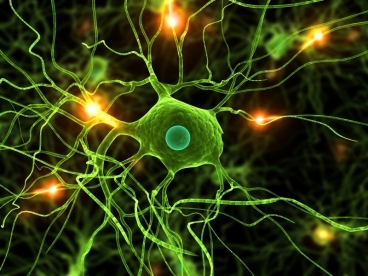Unraveling how a mutation can lead to psychiatric illness
By By Anne Trafton, MIT News Office | 19 Nov 2011
In recent years, scientists have discovered several genetic mutations associated with greater risk of psychiatric diseases such as schizophrenia and bipolar disorder. One such mutation, known as DISC1 - an abbreviation for ''Disrupted in Schizophrenia-1'' - was first identified in a large Scottish family with high rates of schizophrenia, bipolar disorder and depression.
 Studies have since shown that DISC1 mutations can lead to altered brain structure and impaired cognition, but it was unknown exactly how this occurs. A new study from Li-Huei Tsai, director of MIT's Picower Institute for Learning and Memory, shows that DISC1 mutations impair a specific signaling pathway in neurons that is critical for normal brain development.
Studies have since shown that DISC1 mutations can lead to altered brain structure and impaired cognition, but it was unknown exactly how this occurs. A new study from Li-Huei Tsai, director of MIT's Picower Institute for Learning and Memory, shows that DISC1 mutations impair a specific signaling pathway in neurons that is critical for normal brain development.
In a genetic screen of 750 people - some of whom were healthy and some of whom had psychiatric diseases - the researchers found several common variants of the DISC1 gene. However, even though these mutations disrupted normal brain development, they were not necessarily enough to cause disease on their own.
''A lot of the human population may carry this [genetic defect], and they probably actually have some defects in their brain development. However, it's also pretty clear that that by itself it is not sufficient to cause psychiatric disorder,'' Tsai says. ''That's very consistent with the notion that there probably has to be a combination of several different genetic variations to trigger a clinically measurable outcome.''
The study will appear in the Nov. 17 issue of the journal Neuron. Lead author of the paper is Karun Singh, a postdoc at the Picower Institute.
Disrupted development
In a study published in 2009, Tsai and her colleagues showed that the DISC1 gene regulates a cell signaling pathway known as Wnt. This pathway has been found to stimulate stem cell proliferation during embryonic development. Most importantly in terms of psychiatric disease, Wnt signaling promotes the proliferation of neuroprogenitor cells, immature cells that eventually become neurons.






























